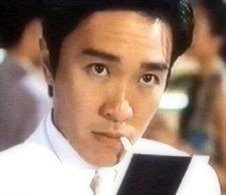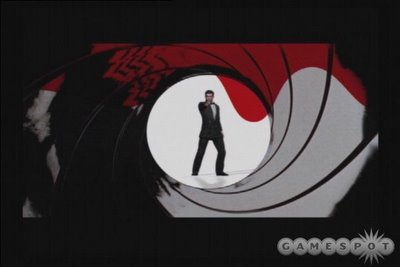Another year passes, and still there's no partner for Proton. The ailing Malaysian national car company has held abortive talks with GM, Volkswagen and PSA over the past months, but now it looks like Malaysia will take a different approach. Mark Bursa reports
It looks increasingly likely that Proton will end up under the control of another Malaysian company rather than forming a foreign alliance. This local solution has long been mooted as a viable way forward, though Malaysian officials have waited until all avenues have been exhausted in terms of finding an overseas technology partner. Now it looks like the time has come - and Malaysian automotive firms are forming an orderly queue.
The timing could be fortuitous. Proton has just posted a modest quarterly profit of US$1 million for the second quarter of 2007, a major improvement on the US$14m loss recorded in Q1, or the US$71m loss in the second quarter of 2006. And there has been a resurgence in sales, with Proton's Malaysian market share rising to 33.1% in Q2, up from just 26.5% in Q1.
Malaysian prime minister Datuk Seri Abdullah Ahmad Badawi has been encouraged by the signs of a turnaround at Proton. "Proton management has already demonstrated the ability to turn around. The situation that Proton is in today is not the same as two, three years ago," he reportedly said. Badawi has asked Proton to produce a turnaround plan, regardless of talks with potential partners.
However, Proton shares have fallen sharply since the discontinuation of VW talks earlier in November, falling 18.6% to a 10-year low of 4.02 Ringgit (US$1.20) immediately after the talks broke down, and share price has continued to slide to 3.66 Ringgit at the time of writing, so Proton is currently something of a bargain.
And there seem to be no shortage of takers, with at least four Malaysian companies, all with automotive interests, expressing an interest in acquiring the Malaysian Government's controlling stake in Proton. In the frame are DRB-Hicom - at one time owner of Proton; the fast-rising Naza Group; the Sime Darby conglomerate and Mofaz, an importer of used cars.
Proton's probably too big to digest for Mofaz, but the other three are serious businesses for which Proton would be a good fit. And other companies could also step into the frame - Perodua, Malaysia's other National Carmaker, has often been mentioned as a possible buyer, as is Malaysia's national oil company Petronas, which holds a small shareholding in Proton already.
Proton chairman Mohammed Azlan Hashim appears to favour a local partnership. "Whatever is good for Proton, it will definitely be on the cards," he was quoted as saying at the Bangkok Motor Show. A local alliance "has to be considered", he added. "We have to keep an open mind." And Malaysian deputy prime minister Najib Razak was quoted by the Malaysian Bermana news agency as not ruling out such a deal.
Control of Proton currently rests with Malaysia's state investment arm Khazanah Nasional, which owns 43% of the company - more than the limit allowed by the Malaysian Stock Market. Khazanah Nasional is supposed to sell off some of these shares - but appears to be under no pressure to do so.
DRB-Hicom has Proton track record
But until 2000, control of Proton lay with one of the companies that is now trying to buy it - DRB-Hicom. DRB-Hicom sold its 27% stake to Petronas in 2000, but Petronas disposed of most of this to Khazanah Nasional in 2002, maintaining just a 7% shareholding. A further 12% stake is held by the Employees Provident Fund (EPF), a social security organisation that provides retirement benefits to private sector employees and non-pensionable public service employees.
Many in Malaysia believe Proton's troubles began the day Yahaya Ahmed, DRB-Hicom's owner, and Proton chairman, was killed in a 1997 helicopter crash. At the time, Proton was on something of a roll - it controlled around two-thirds of Malaysian car sales and exports to Europe were growing.
But trouble was brewing in the form of the 1999 Asian economic crisis; it's doubtful Yahaya could have done much to alleviate Proton's resulting pain if he had lived. Further problems stemmed from the Asian Free Trade Agreement (AFTA) among nations in the regional ASEAN trade bloc, which removed much of Proton's protected status as a National Car maker. And a change of president, with Abdullah Ahmad Badawi replacing the controversial Mahathir Mohamed, weakened Proton's position.
Proton, founded in 1985 was seen very much as Mahathir's baby, and the passing of control to DRB-Hicom was seen as a further example of state patronage in action - a favoured business being passed a state asset. But Badawi is less favourably disposed to Proton - indeed, he's known to favour Naza, the upstart automaker whose founder, Tan Sri Nasimuddin SM Amin, hails from the same region in northern Malaysia as Badawi.
Nevertheless, DRB-Hicom has survived the loss of its founder and has performed a financial turnaround, returning to profit in 2006-07, according to its chairman Tan Sri Syed Anwar Jamalullail. He has built the company into a four-pronged conglomerate, with interests in automotive, services, property and infrastructure, and defence technology. Automotive is the largest part of this, accounting for 44% of the business. And DRB-Hicom has made two major advances in the car business this year.
Firstly, it has set up a joint-venture to distribute vehicles for GM. This move may have played a role in convincing GM not to invest in Proton - instead this is a much lower risk business model with plenty of growth potential, possibly involving CKD assembly in the future. GM has 51% of the JV, Hicom-Chevrolet Sdn Bhd, and DRB-Hicom 49%. The JV is targeting sales of 5,500 cars in the mid-term, largely through adding new models and opening more dealerships. It expects to sell 4,000Aveo subcompacts in 2008 and has just launched the Captiva SUV.
Secondly, DRB-Hicom has acquired a 20% stake in Edaran Otomobil Nasional Bhd (EON), Proton's Malaysian distributor with 72 dealerships. DRB-Hicom plans to build that stake to 49%. "Automotive is still our main contributor but we don't want to put all our eggs in one basket," Syed Anwar told reporters after the group's extraordinary general meeting last month.
DRB-Hicom group managing director Mohd Khamil Jamil said he was definitely interested in some form of deal with Proton. "If there is an opportunity, and if the government allows us to have an opportunity, of course we would love to see where we can participate," he said, adding that this did not necessarily involve buying Proton. "There are many ways of collaboration; not necessarily must we have a share in Proton," he said.
Naza is keen too
Naza is equally keen, according to Nasimuddin SM Amin. "Proton is a good company and we are willing to share with it our technical, research and development, and marketing experience," he told local media. Naza assembles Kia and Peugeot cars from CKD kits, and last year established its own brand, using a range of small cars sourced from Hafei Motor in Harbin, China. A new factory is being built to assemble these cars. Naza also has its own dealership infrastructure, and even though it does not have the same National Car status as Proton, Nasimuddin has the Prime Minister's ear.
Even so, Proton would be a very large acquisition for Naza.
Sime Darby the dark horse
Having the sort of large corporate structure capable of digesting it might give an advantage to the 'dark horse' in the contest, Sime Darby, Malaysia's biggest company.
Sime Darby is a diversified conglomerate whose key activities include being Malaysia's biggest property developer and the world's largest palm-oil producer, following recent takeovers. This gives it a major role in the burgeoning bio-fuels industry - as well as a market capitalisation of around US$19bn.
It's also one of the largest car distributors in Malaysia, handling brands including BMW, Ford and Land_Rover. Nevertheless, Sime Darby president and chief executive Datuk Seri Ahmad Zubir Murshid is surprisingly cool on whether the group is interested in Proton: "We have just turned around our motor business. I don't think we want to take another task at the moment," he said.
What of Perodua, since 2006 the Malaysian market leader? Perodua is effectively a subsidiary of Daihatsu - all its models are Daihatsu designs, and the added complexity of trying to digest Proton, with all its problems, just doesn't seem to fit the way Perodua operates. The company has made no comment on Proton, and seems unlikely to enter the frame.
Realistically, the battle for Proton looks like a straight fight between DRB-Hicom and Naza. Most of the smart money is on Naza, but DRB-Hicom might just bring GM back to the table. "Never say never," Steve Carlisle, head of GM's Southeast Asian operations, told reporters at the launch of the Chevrolet Captiva when asked if GM was out of the race for Proton. He said GM would make "a fresh assessment" of the position if Proton's status changed.
Equally, Naza could bring a partner to the party too. Probably not Peugeot - board director Gilles Michel recently said he did not see Malaysia as having major potential for growth. "Malaysia is smaller, and fairly protectionist, so it is not logical for us to set up manufacturing," he said. In any case, PSA is focusing on China, India and Russia.
Kia?
But Kia could be a potential partner. Its partnership with Naza is close - Naza handles all Southeast Asian training for Kia, for example, and Naza-assembled Kias are sold elsewhere in ASEAN. Malaysian and Korean tastes are similar too, so the cars would be a good fit.
When will a deal take place? Proton wants to firm up its financial and sales recovery first - but prime minister Badawi is unlikely to want his predecessor's pet project to fester for long. Expect something to happen in 2008 - probably sooner rather than later.
Mark Bursa
- Proton Timeline -
1981: Malaysian Prime Minister Matathir Mohamed begins plans to establish the first Malaysian automaker.
1983: Perusahaan Otomobil Nasional Bhd. (Proton) is launched as a joint-venture with Mitsubishi.
1985: The company begins distribution of its first model, the Mitsubishi Lancer-based Saga, Malaysia's first "national car", which captures a 47% share of the domestic market.
1986: First Proton exports - to Bangladesh.
1987: Saga captures a 73% share of the domestic market.
1989: European exports to UK commence.
1992: Proton floated on the Kuala Lumpur Stock Exchange.
1993: Iswara and Wira models launched, based on newer Mitsubishi designs.
1995: DRB-Hicom, controlled by industrialist Yahaya Ahmad, buys the Malaysian government's majority stake in Proton.
1996: Proton buys 80% of UK sports car maker Lotus.
1997: Yahaya Ahmed killed in helicopter crash; Saleh Sulong becomes DRB-Hicom CEO. Proton has 64% share in Malaysian market.
1999: Asian economic crisis puts plans to build $2bn "Proton City" plant on hold.
2000: The Waja, Proton's first in-house developed car, is launched. DRB-Hicom sells Proton stake to Petronas.
2002: Government takes back control of Proton following share-swap deal with Petronas.
2003: Proton City opens.
2005: AFTA agreement ends protection for Proton in Malaysia.
2006: Proton market share in Malaysia slips back to 26%; Perodua overtakes Proton as market leader.
2007: VW, GM and PSA all hold partnership talks with Proton - but no deal is struck. Proton share recovers to 33% in Q2.
2008: A domestic partner for Proton?
See also: EMERGING MARKETS ANALYSIS: Malaysia's Naza: how to build a car company from scratch
View more just-auto.com feature articles
Article tags: Proton, GM, PSA, Kia, Volkswagen, Chevrolet, Peugeot, Daihatsu, Acquisition, Mitsubishi, BMW, Ford, Land Rover, Smart, India, distribution, Lotus
Labels: News, Proton



